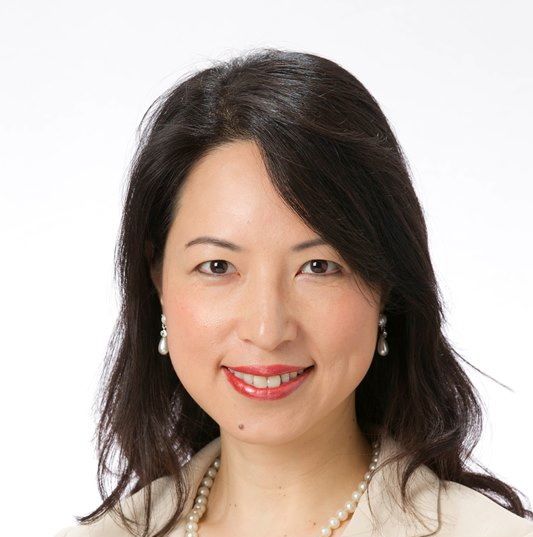Robeco, about China: “Some Investors Did Leave The Market, Providing A Good Entry Point for Long Term Investors”
| For Alicia Miguel | 0 Comentarios

Victoria Mio, co- chief investment officer in Asia Pacific at Robeco and Robeco Chinese Equites’ fund manager, explains in this interview with Funds Society her outlook for the Chinese economy and markets and the impact for the global economy.
How would you explain the volatility that the Chinese stock markets have experienced in recent weeks?
For the offshore Chinese equities listed in Hong Kong and the US, the recent volatility is due to the following factors: continued lack of sign for macroeconomic condition improvement in China; changing of Chinese currency CNY pricing mechanism and 3% one-off CNY depreciation; lack of upside surprise from the 1H2015 corporate earnings result season in August; expectation of interest rate hike in the US causing funds outflows from global emerging markets, including China. For the domestic A share markets, there is a Chinese specific condition: unwinding of margin finance. At the peak, margin financing through the official channels stood at CNY 2.3 trn in mid Jun, and dropped to less than CNY 0.9 trn.
Will the current Chinese government measures be enough? To what extent the Chinese authorities have room to boost the markets?
China government has recently introduced new stimulus as debt-swap (CNY 3.2 trn debt-swap program for maturing short-term LGFV debts to be converted into long-term local government bonds), local government projects (boosting the capital adequacy ratios of China Development Bank and Export-Import Bank of China, and issue policy bonds to support local government projects), infrastructure (support construction in 5 areas: agriculture, urban infrastructure, environment protection, public housing and high-end manufacturing & telecom), property (PBOC cut the down-payment requirement for second homes to 40% from 60%. This will likely lead to an improvement in property investment in 4Q15), export (the State Council pledged on 26 August 2015 to support China’s export by cutting levies on exported goods, increase the transparency of port and customs fees, etc.) and consumption (the government also cut the RRR for auto loan by 300bps to support auto finance).
These stimuli may not be enough to stop the deceleration in growth, but they will reduce the downside. We expect that the Chinese central bank will continue to cut interest rate or RRR in Oct this year, and will continue the monetary easing policy next year. We also expect the government to do more fiscal spending to boost growth in the coming months, particularly related to the 13th Five Year Plan (covering 2016-2020). The initial plan is likely to be announced in October 2015 and finalized in March 2016.
Is there anything you may find positive about such markets correction?
Valuation becomes extremely attractive now. Some investors did leave the market, providing a good entry point for long term investors.
Do you see room for further declines in China’s markets?
Given the extreme bearishness in the market, and record low valuation, the downside is limited. The risk is to the upside in the next 3-6 months.
At this moment, what is your strategy: taking the opportunity to buy low or selling because of high volatility?
We remain overweight China within our APxJ/EM coverage universe. We are selective with stock ideas, and prefer sectors/stock names with healthy earnings growth trajectory, and potentially have higher US$ or equivalent revenue exposure while its cost base is more RMB denominated. Such sectors/companies will benefit under the RMB depreciation scenario.
To what extent this crisis will impact in the developed world, especially Europe and the US? Do you think the situation can be spread around, as we saw in August?
Due to capital control in China, the correction in China A share markets will have little impact on global markets, except the Hong Kong equity market, through the Shanghai-Hong Kong Stock Connect.
The net impact of the change in the RMB currency management approach on the global economy is dependent on whether policy-makers also take up easing measures in a way that stabilizes growth in China. A currency move, just by itself, will lead to tightening financial conditions elsewhere in the world (by way of appreciation of other economies’ trade-weighted indices) and could prolong the impact of disinflationary forces on the global economy. We expect this impact to be felt most materially in the Asia ex Japan region and also in the US (given the close trade linkages between China and these economies).
What about the contagion of other markets in Asia? And in Latin America?
From macro perspective, the Asia ex Japan region is highly exposed to the impact of China’s slowdown, as China has emerged as a key source of end demand over the past years. Within the region, Korean, Taiwan and Singapore would be the most affected via the direct trade channel, while Indonesia and Malaysia would be affected via the commodity price channel, owing to their status as the net commodity exporters in the region.
Latin America is less directly exposed to China’s end demand. But with the majority of tis exports basket commodity related, a growth slowdown in China would affect the region via weaker commodity prices and a negative terms of trade impact. Domestic demand could be further affected via weaker consumer purchasing power and reduced attractiveness of commodity related investment. Government spending could be constrained by weaker commodity tax revenues.
From a currency market perspective, the adjustment of the fixing mechanism of the CNY may have a potential impact on other Asia currencies, as the resultant devaluation has resulted in the Asian currencies trading weaker too.
Do you think this turmoil may lead the Fed to delay, even more, the interest rates hikes?
Specifically, for the Fed, China’s move complicates one of the three criteria – a leveling out in the trade-weighted dollar – that the Fed had laid out earlier this that, if met, would give it the confidence to raise the target rate this year. Robeco holds the view that the Fed will start its first rate hike in December 2015.
What impact will the new China have in global growth, commodity prices, and in general, in the world economy?
Unlike the “old China” sectors that are more investment + export driven and more energy intensive, the “new China” is more consumption driven and less energy intensive. If the relatively faster growth in “new China” helps to prevent a major slowdown in China’s growth, in general, China is likely to continue contribute to world GDP growth by a significant share, though commodities prices are unlikely find a meaningful lift from this.
Will there be soft or hard landing?
We expect China to have a gradual pace of adjustment to address the challenges of managing the disinflationary pressure and high debt level. This gradualism approach means that the disinflationary pressure could persist for longer as we believe that the magnitude of excess capacity in China remains large during this slow adjustment process.
As policy makers continue to adopt gradual adjustment, we believe investment growth will continue to slow in an environment of relatively high real borrowing cost trend, particularly for the industrial corporate sector. Moreover, moderation in corporate revenue and nominal industrial growth is resulting in the corporate sector slowing wage growth, which in turn is likely to weigh on private consumption growth. Hence, we expect GDP growth to slow to 6.8% YoY in 2016.
We have seen the slower GDP growth mainly weighed by industrial sectors. The current weakness in growth mainly reflected the difficulties in industrial economy on the back of deceleration in investment growth and systematically weaker external demand. However, services sectors growth continues to outperform the industrial sectors. The services sectors – which represented 48.1% of GDP in 2014 (vs. 44.2% in 2010) – have been outperforming the overall GDP growth. Tertiary sectors growth was 8.4% YoY in 1H15 (vs. 7.8% YoY in 2014), partially offsetting the slower growth in secondary sectors (6.1% YoY in 1H2015 vs. 7.3% YoY in 2014). The strength in the services sectors is reflected in the relatively higher reading of non-manufacturing PMI at around 53-54, well above manufacturing PMI which is hovering at around or slightly below 50.














